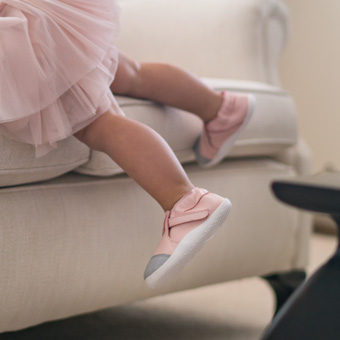 As the COVID19 restrictions are easing with children and teenagers allowed back into small group sports training I’m expecting an influx of appointments for paediatric heel pain. This is commonly known amongst mothers, fathers and sports coaches as “Severs’ Disease”. This isn’t a great name for this condition as it often enflames fear into perfectly healthy and active children and teenagers. Severs’ disease is common in children aged 8-14, but can be seen in children as young as six and up to 15 years of age. During this period of time the heel bone is going through some normal changes as the bone in the bone matures, so it’s not really a disease. The World Health Organisation has recently put out a statement “new disease names should not include..the names of people..or terms that incite undue fear”. So, let’s call this type of heel pain in children for what it is… calcaneal (the heel bone) apophysitis (inflammation or stress injury to the areas on or around growth plates in children and adolescent).
As the COVID19 restrictions are easing with children and teenagers allowed back into small group sports training I’m expecting an influx of appointments for paediatric heel pain. This is commonly known amongst mothers, fathers and sports coaches as “Severs’ Disease”. This isn’t a great name for this condition as it often enflames fear into perfectly healthy and active children and teenagers. Severs’ disease is common in children aged 8-14, but can be seen in children as young as six and up to 15 years of age. During this period of time the heel bone is going through some normal changes as the bone in the bone matures, so it’s not really a disease. The World Health Organisation has recently put out a statement “new disease names should not include..the names of people..or terms that incite undue fear”. So, let’s call this type of heel pain in children for what it is… calcaneal (the heel bone) apophysitis (inflammation or stress injury to the areas on or around growth plates in children and adolescent).
Generally, calcaneal apophysitis is a self-limiting condition that children and young adolescents grow out of while allied health clinicians can help manage the child’s symptoms. The symptoms that kids experience are pain at the heel with and shortly after activity that goes away with rest.
In my clinical experience I have a flood of children present with symptoms of calcaneal apophysitis at the start of every school year, when there is cross over from winter to summer sporting codes, a rapid increase in activity or after a period of minimal activity. Often the change in footwear type can be an external contributor; football boots, soccer boots and basketball shoes most commonly as these tend to be very flat in design. Or as a child starts an activity or sport that they have not done before and are building their endurance for that activity. Although much of the literature will say that calcaneal apophysitis affects very active children, in my experience I have seen it in both very active and junior elite sporting children and those that are requiring a lot of motivation to participate and move around.
So, what do we do about it? How do we treat calcaneal apophysitis? There is no set algorithm or treatment flow chart for this condition although there are some common first steps parents can try; ice pack after activity, gel heel cups from the pharmacy or sports store and if there has been a rapid increase in activity consider modify a session or two for a week. Parents should be aware night pain, swelling, heat or limping will need to be seen by a health professional as this may not be calcaneal apophysitis.
What I would then normally look at in the clinic is to confirm that calcaneal apophysitis is the diagnosis, this often requires some short questioning and a squeeze of the heel bone. Once we have a confirmed diagnosis, we address the other factors that may be contributing such as training and activity loads, strength, flexibility, footwear type, foot posture and running style. I would set up a treatment plan that may include a strength and flexibility program, modification of activity or progression back to normal activity, unload the heel with a heel raise or heel cup, orthotics or a change in footwear.
Children and teenagers heading back to activity after the COVID19 restrictions shouldn’t be worried if they have some minor heel pain. If they have seen me before remember to go back to the plan we set up previously to manage the symptoms. If you aren’t a previous family that has seen me, feel free to give some of the conservative first line treatments listed above a go first and print off “Severs’ Disease” information handouts from the Victorian Peadiatric Orthopaedic Network or the Better Health Network to guide you. If this doesn’t settle in a week or so organise a brief, no charge online telehealth/virtual appointment with myself to discuss if your child, or adolescent son or daughter requires a consultation. Feel free to email me directly to book a time antoni@ajcpodiatry.com.au, ajcpodiatry.com.au or via Lefort Podiatry and Fairfield Podiatry where I offer face to face & online consultations.






